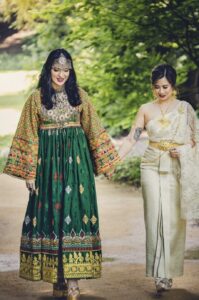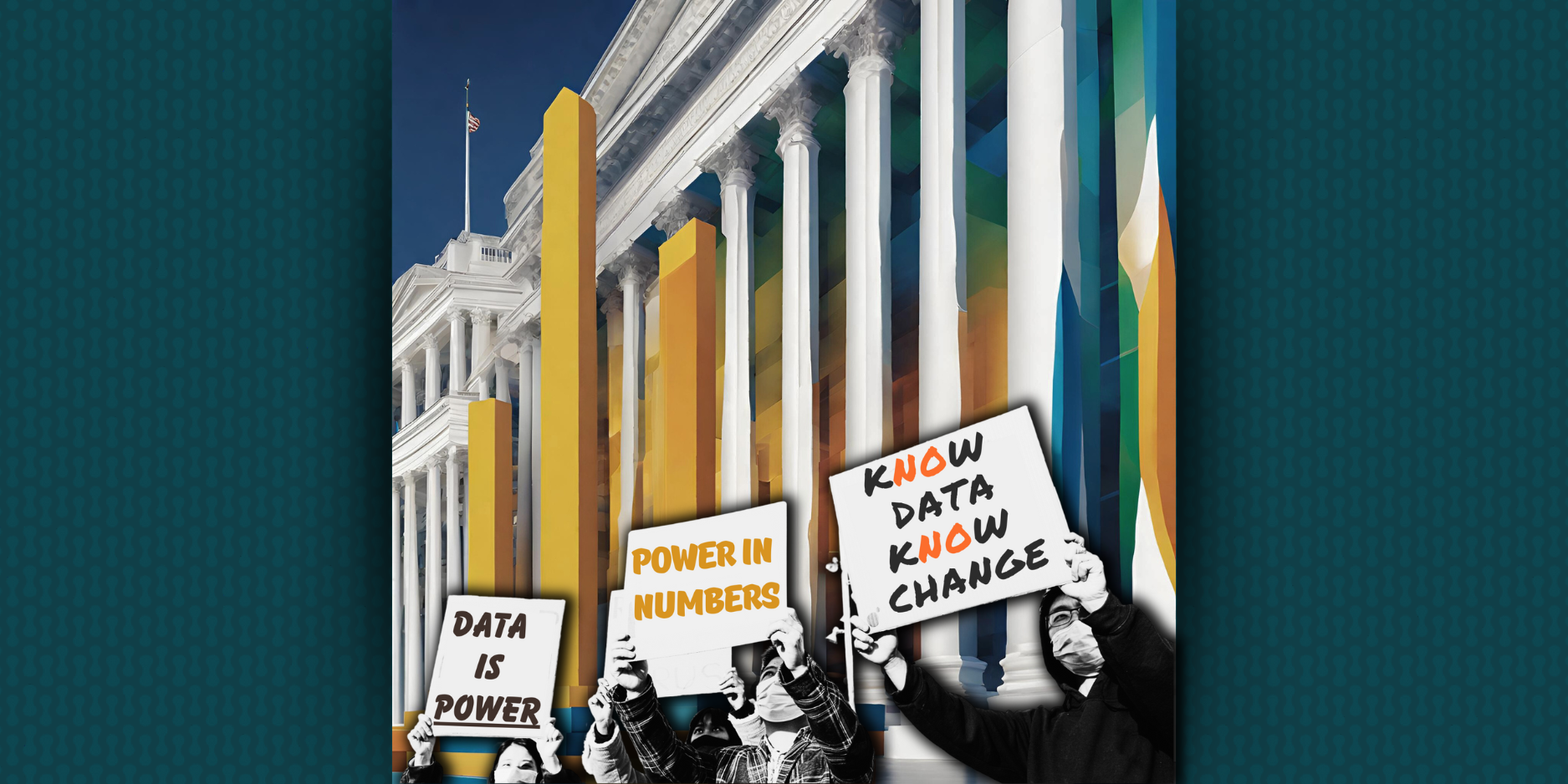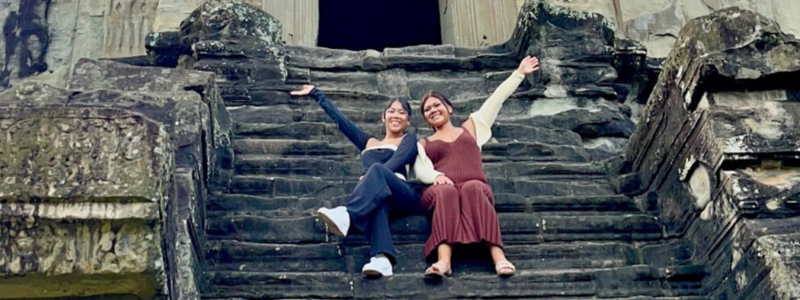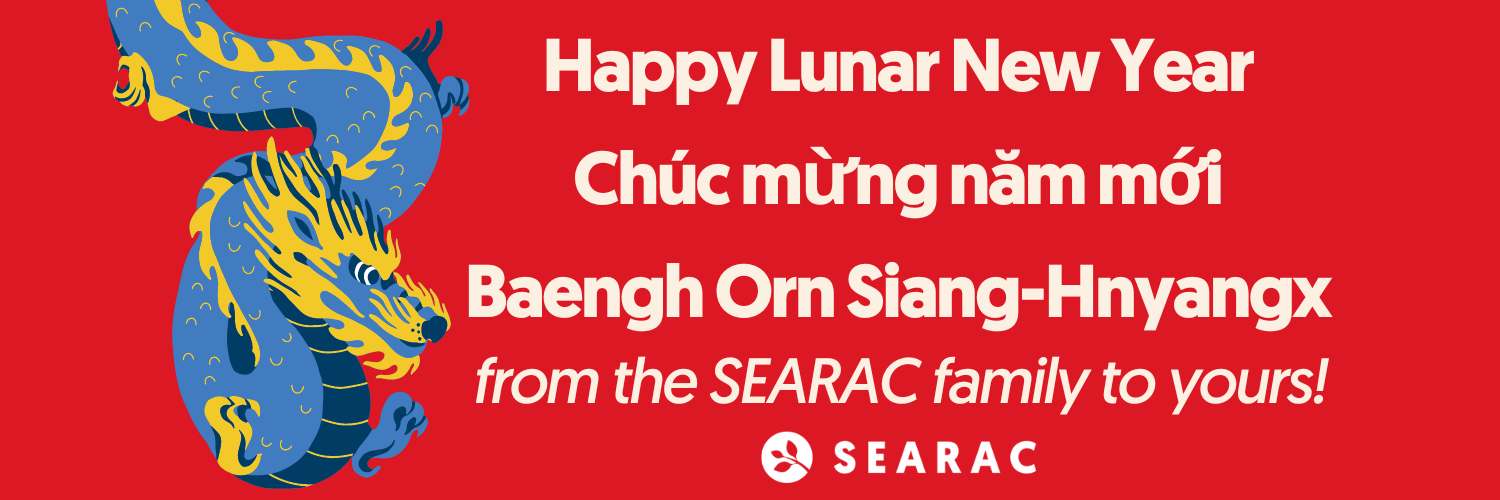June 28, 2023 IN: Our Voices, Staff Blog
Celebrating Pride Month: Part 2

This month, SEARAC Communications intern Sou Saechao connected with a few members of SEARAC’s board to discuss their reflections on Pride Month and its intersectionality with Southeast Asian American activism.
For his second interview in this two-part series, Sou sat down with SEARAC board member Roseryn Bhudsabourg, a government relations professional with a decade of experience in public policy, community outreach, and advocacy. Roseryn is currently the Supervising Program Administrator for the Office of Government Relations with the Santa Clara Valley Water District, the largest multi-purpose water supply, watershed stewardship, and flood management special district in California. Roseryn previously served as a Senior Assistant and Communications Director at the California State Assembly in Sacramento, where she managed legislation and provided communications support to more than 100 bills, advised on key policy decisions, and conducted research and analyses of a broad range of policy issues, including environmental sustainability and social justice. She was also a member of the 2020 Staff Academy cohort of the California Asian Pacific Islander Legislative Caucus Institute and the Capitol LGBTQ Association.
Check out their full Q&A below:
Sou: What does Pride Month mean to you?
Roseryn: Pride to me is a celebration of the very diverse LGBTQ+ community. There’s no one way to celebrate Pride because it’s rooted in activism and intersectionality. At its core, Pride to me means inclusion and acceptance regardless of your race, background, age, gender identity, and socioeconomic background. Pride Month is ensuring that everyone has a seat at the table and uplifting the marginalized voices.

Roseryn (pictured right) marching in the SF Pride Parade in 2013 when the Courts struck down DOMA and California’s Prop 8.
Sou: Has Pride Month changed for you throughout the years?
Roseryn: I would say that it has. When I started participating in Pride Month when I was younger, it was more about finding more about myself and my identity. Through the years it evolved into building a community for myself. I didn’t grow up seeing a lot of gay people in mainstream media and so there wasn’t a lot of representation. Through the years I had to build my own community. I did talk about intersectionality. Sometimes when you go to Pride events, how many AAPI people do you see? How many people of color do you see front and center at Pride events? That’s something that I have noticed that has changed through the years. I think we are going in the direction where it is becoming more inclusive and representative of the diverse communities that exist.
Sou: What does it mean to be both queer and Southeast Asian?
Roseryn: This is something that I struggled a lot with growing up, thinking those were two things that were necessarily compatible with one another. A lot of us in the Southeast Asian community have grown up in conservative households. Mines was among them. For a long time I felt like I needed to have those two identities separate from each other and not something that could coexist. I feel differently about that now and owe that to the fact that our worldview within the AAPI community and globally has been shifting. There are so much progress that has been made in terms of civil rights and policies that involve LQTBQ communities that are a lot more progressive than they were twenty years ago. Now, they are both part of my identity that I am proud of. There is an intersection between being queer and being API because both are part of a minority community that oftentimes has been misunderstood by the greater society. That is why Pride Month is so important because it provides us with an opportunity for representation. There are gay people everywhere and I think that it is helpful for us to have that reflected in the communities that we live in.

Roseryn (pictured right) and her wife during their wedding day on June 11, 2023 wearing their cultural dresses (Afghan and Thai).
Sou: How has being a part of the LGBTQ+ community shaped/influenced your work?
Roseryn: That has impacted and informed all of my work in my entire career. To give you a bit of background about myself, my career is in public service. I started out as a congressional intern. I then went on to work for the local government. I worked for the state legislature and now I work for a special district, working closely in environmental stewardship and water management, which is not the first thing you think of when you think about minority communities. At my core, I’ve always been driven to be as inclusive as I can. When you are queer yourself, you have perspectives that not everyone else has and I think that there’s an obligation there to bring those voices to the table and everything that you do. My core mission in public service and everything that I do is to ensure that all the work I take on, I’m thinking of all the marginalized voices that might not be uplifted otherwise.
Sou: What do you want to tell other LGBTQ Southeast Asian American community members?
Roseryn: If I could say anything to the LGBTQ Southeast Asian American community, it would be don’t give up the fight. There’s still a lot of work to be done. The fight for civil rights is a fight that will never end in our lifetimes, but it is important to keep that work because you can see all the progress that has been made now and how it impacts future generations. The best thing that we can do to leave the world a better place when we’re long gone is to make sure we have a better foundation for future generations.
For more blogs in our Pride Month blog series, see: “Celebrating Pride Month: Part 1”





